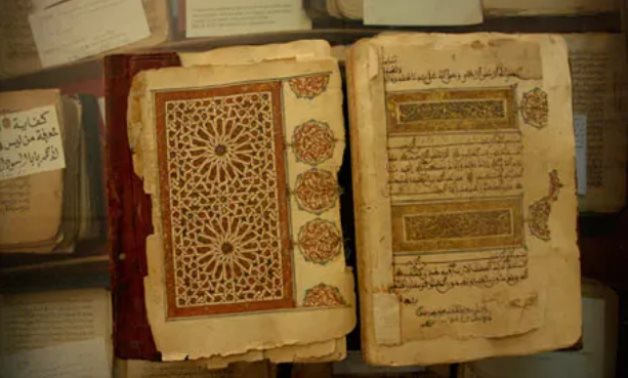
Libraries like the Ahmed Baba Institute were rescuing Africa's history from oblivion. Photograph: Sebastien Cailleux/Corbis
CAIRO – 31 March 2022: The database of Arabic manuscripts in West Africa, specifically in Mali, includes books that were hosted in more than 100 public libraries.
We find that one third of all existing manuscripts (314 titles) were written by 204 known researchers, one fourth of whom came from West Africa. Most of these manuscripts date back to the 19th century but have very deep historical roots.
According to conservation, manuscripts in West Africa are not limited to the Timbuktu manuscripts found in Mali, there are also manuscripts in Mauritania, Niger and Nigeria.
The first contact between North Africa and Timbuktu occurred due to the gold trade in West Africa. This trade also brought Islamic culture across the Sahara Desert and the first reference to manuscripts was in Timbuktu in the 15th century AD.

In fact, Timbuktu was only one of several cities in sub-Saharan Africa that attracted scholars and provided Islamic education in the 15th century AD or the so-called "golden age" of Timbuktu, where its scholars were known throughout North Africa.
This period waned, but Arabic learning flourished again in West Africa in the 19th century, following several Islamic reform movements that stretched from Guinea and the Senegal River Valley to northern Nigeria. The oldest manuscripts in West Africa today mainly date back to this period.
With the decline of scholarship in Timbuktu in the 17th century, Islamic education appeared in the centers of the nomads to the west in today's Mauritania. There is also a collection of manuscripts in Mauritania, based on the contents of 80 private libraries, that give a good idea of what has been found in manuscript libraries.

Parchment manuscript, Timbuktu, 13th – 17th
The most important subjects of West Africa's Arabic manuscripts are Prophet Mohammad, biography and devotion, and mysticism and Qur’an recitation, especially the methods of recitation. This is in addition to manuscripts on the Arabic language (lexicon, grammar, presentations and pre-Islamic poetry).
To explain the Qur'an, teachers often translated the key words into the students' African language (written in Arabic script). Many of the West African teaching manuscripts show these entries between the lines. This practice was a step towards writing classical myths, or African poetry in Arabic.
Comments
Leave a Comment